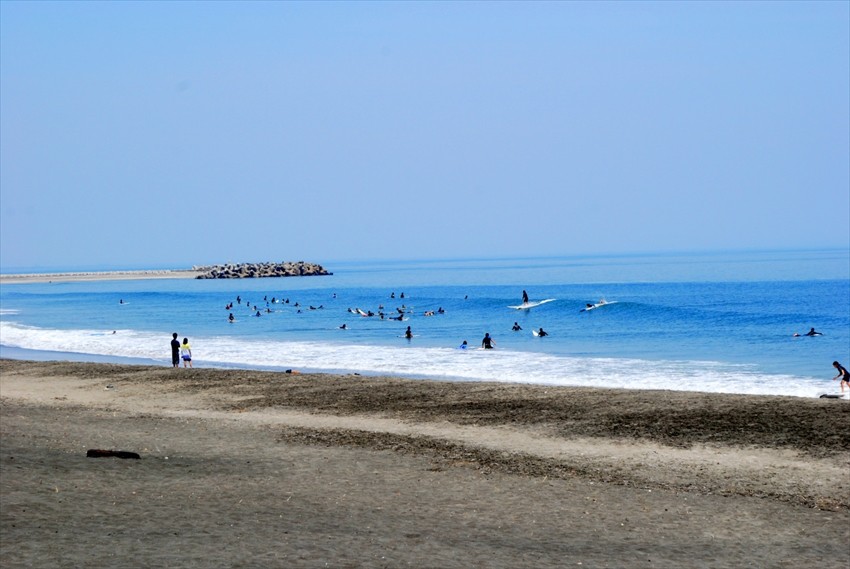
A 60km stretch of uninterrupted sandy shores, Kujukuri Beach is a surfing and swimming haven on the Boso Peninsula. As the second-longest beach in Japan, it has plenty of room for everyone, with many visitors traveling up from nearby Tokyo on weekends and holidays.
Where is Kujukuri Beach?
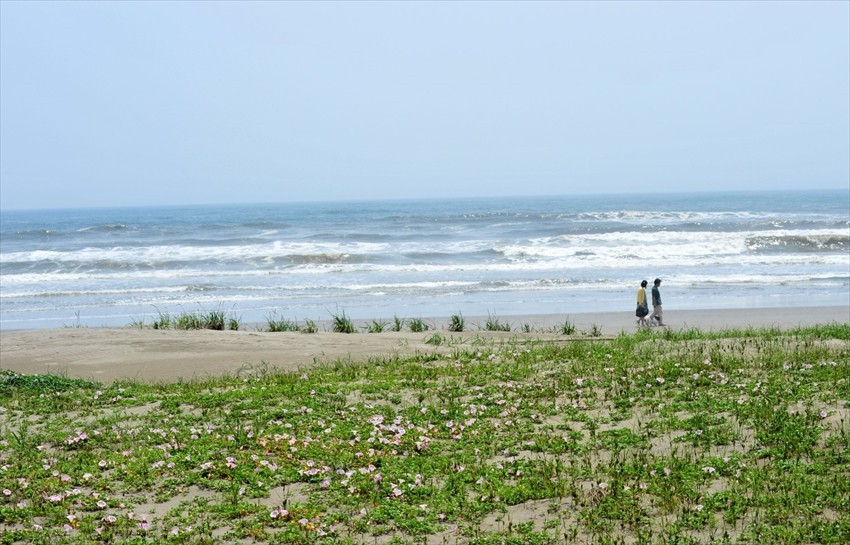
Kujukuri Beach is on the northeast coast of the Boso Peninsula in Chiba Prefecture. Stretching from Choshi to Isumi, it covers a number of separate beaches and is part of the Kujukuri Prefectural National Park. The arc extends from Cape Gyobu to Cape Taito, and is on the Kuroshio Current.
Why is Kujukuri Beach So Popular?

Whether you’re a swimmer, a surfer or a long-walks-on-the-beach kind of person, Kujukuri has something for everyone. The 60km beach has numerous different areas to visit, with soft sand and pristine waters throughout. The beach is considered especially great for surfing, with wind from the Pacific Ocean creating challenging waves.
Thanks to the curve of the bay, the beach offers stunning views for those who choose to stroll, with uninterrupted views of sand and sea as far as the eye can see. The relaxed surfer atmosphere means there are plenty of food shacks, cafes and drinking spots in the various beach towns, with many visiting from Tokyo for long weekends in the warmer months.
What to see Around Kujukuri Beach
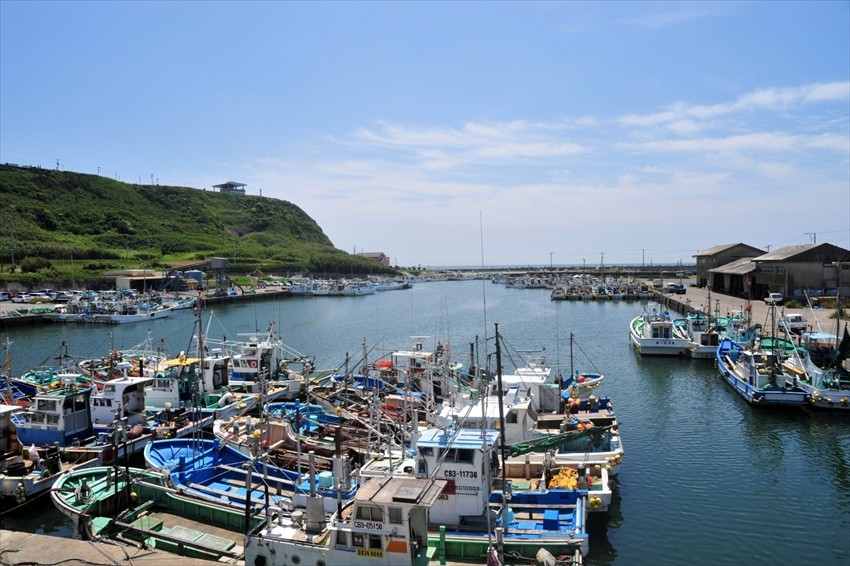
As well as a whole variety of beaches, Kujukuri Beach has a host of sightseeing spots to visit between dips in the turquoise waters.
Iioka Beach: The Perfect Beach for Surf Students
On the far eastern side of Kujukuri, Iioka Beach is a popular spot thanks to its shallow waters and calmer waters. These conditions make it a great place for surfing students, with a number of surf schools open along the shore. It’s right beside Hagizono Beach, easily recognized thanks to its two carved faces at the beach entrance.
Spot Information
- Name: Iioka Beach (飯岡海水浴場)
- Address: 1356 Yokone, Asahi, Chiba
- Location: Iioka Beach is on the eastern tip of Kujukuri Beach,
- Access: The beach is a short bus journey from Iioka Station on the JR Shiosai and Sobu Lines.
Shirasato Beach
In the center of Kujukuri, Shirasato is one of the closest beaches to Tokyo. It is a picture-perfect beach, with wide, sandy shores and surf-ready waters with plenty of challenging waves. Beach-goers are well catered for with showers, toilets and plenty of relaxed cafes in the town.
Spot Information
- Name: Shirasato
- Address: 4-881 Minamiimaizumi, Oamishirasato, Chiba
- Location: Shirasato Beach is just to the south-west of the center of Kujukuri Beach, not far from the Kujukuri Beach Tower.
- Access: Shirasato is close to the Togane Kujukuri Toll Road, with driving the easiest form of access as the nearest station is Oami on the JR Sotobo, Wakashio and Togane Lines, a 30-minute bus journey away.
Strawberry Picking
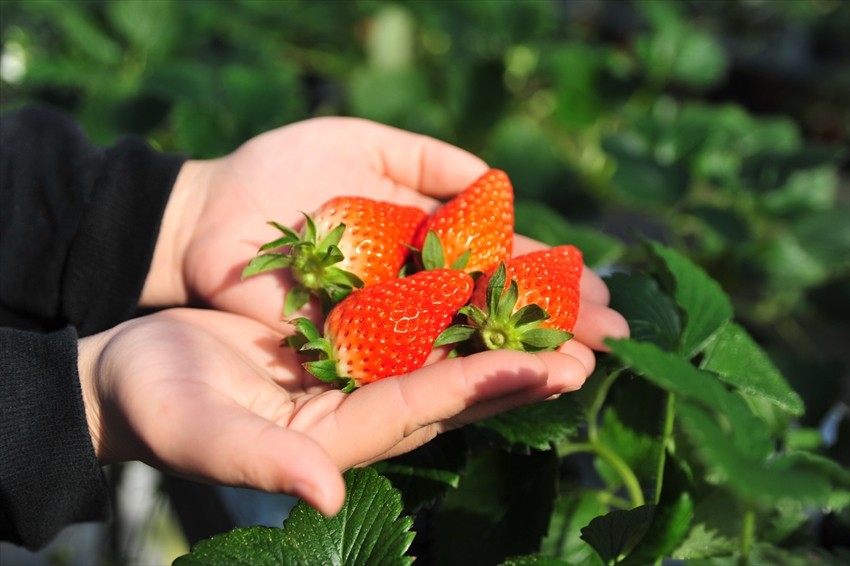
While there aren’t actually strawberry fields along the beachfront, they’re surprisingly not too far away. Fujishiroichigo Orchards are only a short drive from the Motosuka, Sakuda and Katakai Beaches. They offer eight varieties of strawberries to choose from including an unusual white variety called Shiroi Yousei, meaning ‘White Fairy’ and a local Chiba strawberry called Ouka. Strawberry picking is available in winter with an all-you-can-eat session lasting 40 minutes and costing 2,300 yen per person, with reduced rates for children under six years old.
Spot Information
- Name: Fujishiroichigo Orchards (藤代いちご園)
- Address: 920-1 Sakuda, Kujukuri, Sambu District, Chiba
- Access: The strawberry farm is located a short taxi ride from Gumyo Station on the JR Togane Line. Alternatively, it is a 30-minute walk from the shoreline.
Inubosaki Lighthouse
On the very north-eastern tip of the bay, Inubosaki Lighthouse was built by a British Engineer Richard Henry Brunton in 1874. It is one of the only lighthouses with an original lens and is a Registered Tangible Cultural Property of Japan. Visitors can climb the 99 steps to the top to enjoy views of Kimigahama Bay. There is a small museum attached with photos of the lighthouse’s history. It is next to the Inubosaki Fog Horn Station and has a white postbox where letters receive a special lighthouse stamp franked on before they are sent.
Spot Information
- Name: Inubosaki Lighthouse (犬吠埼灯台)
- Address: 9576, Inubosaki, Choshi, Chiba
- Location: The Lighthouse is on the easternmost point of the bay, at the mouth of the Tone River and inside Kimigahama Shiosai Park.
- Access: The Lighthouse is a ten-minute walk from Inubo Station on the Choshi Electric Railway.
- Hours: 08:30 - 16:00
- Entry: 200 yen (children under 12 go free)
Beach Tower
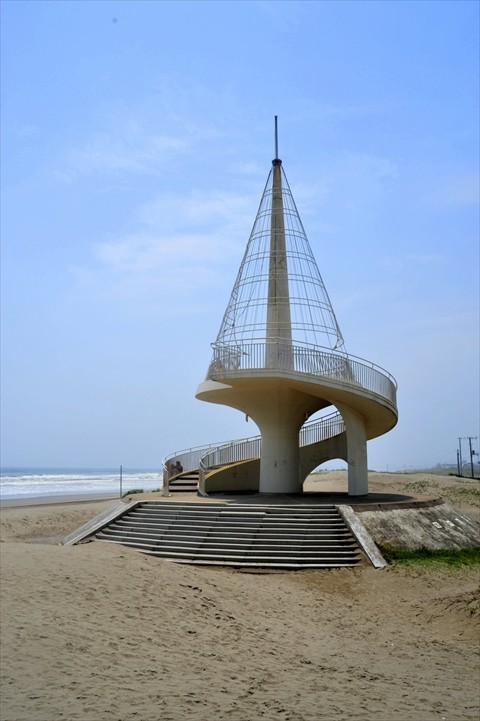
Right in the middle of the soft curve of Kujukuri Beach, the tower provides beautiful views of the sea and sands from Fudodo Beach. The spiral tower is 22m and claims one of Chiba prefecture’s top 100 views.
Spot Information
- Name: Kujukuri Beach Tower (九十九里ビーチタワー)
- Address: Fudodo, Kujukuri, Sambu District, Chiba
- Location: The beach tower is located in the middle of Kujukuri Beach, close to the Kujukuri Interchange.
- Access: The tower is beside the Kujukuri Interchange, or a local bus journey from Togane Station on the JR Togane Line.
Iioka Gyoubu-Cape Observatory
Another spot for great views, the Iioka Observatory is atop a 1950s lighthouse, right on the tip of the Kujukuri curve. Looking out across Cape Gyobu, visitors can look out over the local port, across the Pacific and can follow the sands of Kujukuri as far as the eye can see. On very clear days, Mt. Fuji is visible in the distance.
Spot Information
- Name: Iioka Gyoubu-Cape Observatory (飯岡刑部岬展望館)
- Address: 1309-1 Kaminagai, Asahi, Chiba
- Location: The observatory is in Iioka, on the east tip of Kujukuri Beach.
- Access: The observatory is a short bus ride from Iioka Station on the JR Sobu Line.
- Hours: 09:00 - 16:30
Popular Food at Kujukuri Beach
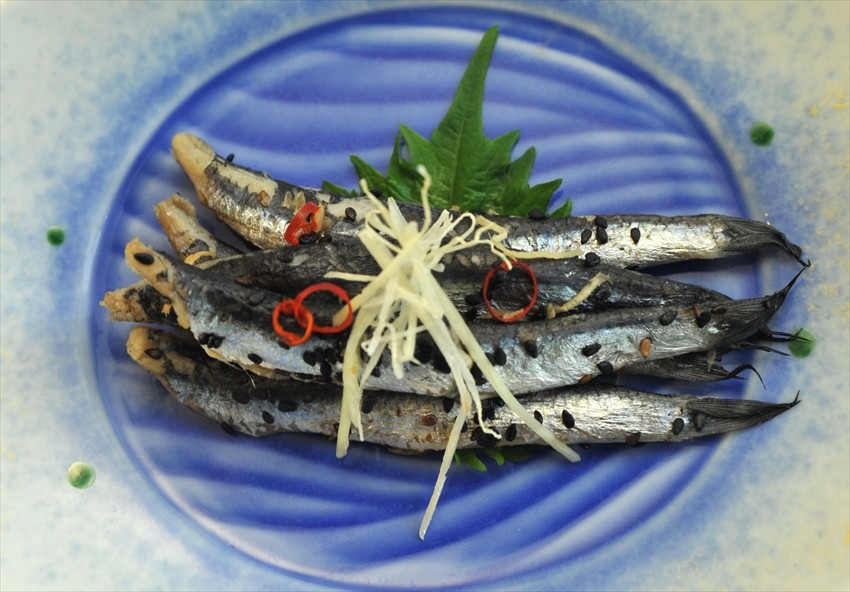
Along with surfer-style restaurants focusing on relaxed fair inspired by other surf-nations like California and Hawaii, there are some local specialties to try at Kujukuri.
Needless to say, seafood is a great place to start. Thanks to the adoption of the Seine style of fishing using vertical nets in the Edo Period, the area has long been known for hoshika, or dried sardines. Along with dried, fresh are also popular, either grilled simply or used to make dumplings in a soup. Sangayaki is a fried dish made with chopped sardines, herbs and miso - a great local dish to try.
Another popular option is clams, which are harvested here by local fishermen. Served grilled by the local restaurants or beach shacks, the clams are fantastic with a dash of soy sauce, especially when cooked with butter.
How to Get to Kujukuri Beach
Given the size of Kujukuri Beach, travel plans are dependent on the specific area you wish to visit. For those driving, Route 126 runs the length of the beaches with the Kujukuri Interchange offering access to the heart of the curve.
If relying on public transport, the JR Togane Line offers access to the northern half while the Sobu Line offers access to the southern half. Both are accessed via the Sotobo Line from Chiba, which divides at Oami Station. In Choshi, the Choshi Electric Railway connects the end of the Togane line with the tip of the coast. There are local buses connecting stations with towns and beaches on the coast, so be sure to check timetables in advance, especially if visiting outside of holiday season.
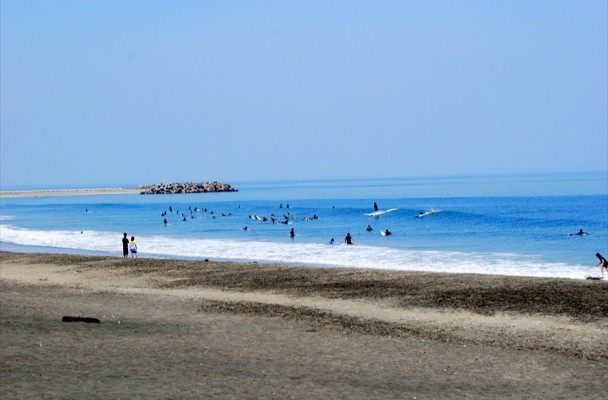


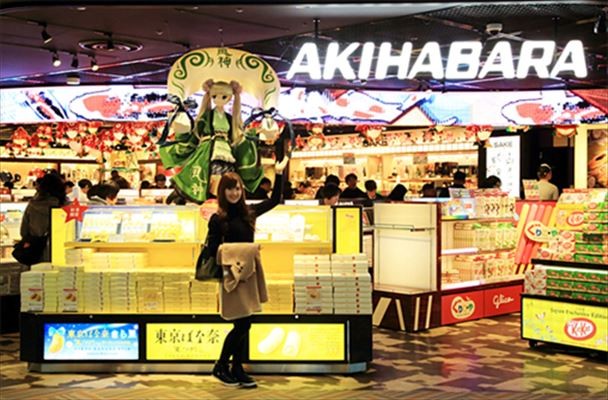
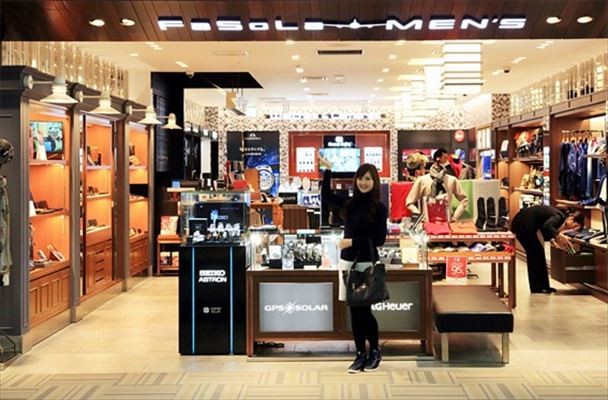
Comments